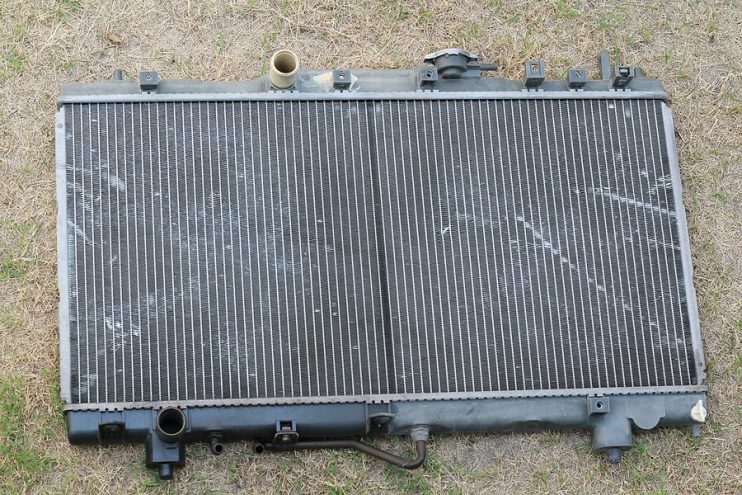
Every car produces heat not only from the combustion in the engine, but also from fast-moving parts such as the wheel bearings. Without proper cooling, your vehicle could potentially overheat or even catch fire. Your radiator is your number one defence against high engine temperatures – so how can you ensure this part is working correctly? And more importantly, what are the signs your radiator could be suffering from problems?
Table of contents:
- How does the radiator work?
- What are the signs of a faulty car radiator?
- How long do car radiators normally last?
- Replacing your car’s radiator
How does the radiator work?
Radiators are heat exchangers. The coolant is pumped around the engine, picking up heat energy as it moves through the different parts and systems. The radiator, usually made out of aluminium or another highly conductive metal, then channels this coolant into thin tubes (known as fins) that are exposed to air rushing through the front of the car. The air cools the metal, dissipating the heat from the coolant before it circulates back through the engine again.
Because the radiator relies on thin tubes and a coolant pump, it can become blocked or fail over time. Many problems can be resolved early with proper maintenance, but neglect can quickly lead to costly engine damage.
What are the signs of a faulty car radiator?
1. Overheating
When the radiator fails, the car will most likely overheat. You may notice steam rising from the engine or see the temperature gauge reading higher than usual. Cars typically operate at around 90°C to 105°C – any higher temperature could cause damage to the engine.
Causes
Internal corrosion, rust, or debris can block the radiator, preventing the coolant from circulating properly.
What to do
Fix the issue immediately. Start by replacing the coolant to rule out contamination. If that doesn’t help, book in with a mechanic for a full radiator check.
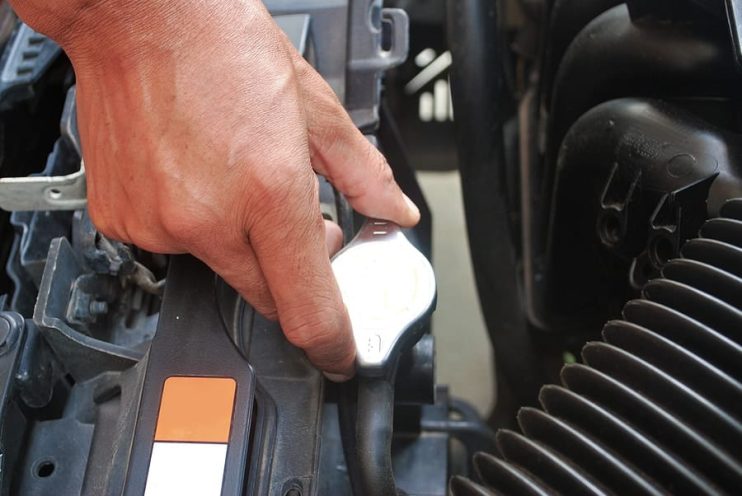
2. Leaking coolant
If you’ve noticed bright patches of liquid under your parked car or the coolant warning light coming on frequently, your radiator may be leaking.
Causes
Cracks, corrosion, or rust build-up inside the radiator housing or fins. Using tap water instead of distilled water can worsen rust over time.
What to do
A mechanic can run a pressure test with coloured dye to confirm a leak. In most cases, a replacement radiator will be needed.
3. Sludge build-up
If your coolant appears rusty or brown, it may indicate that it’s not circulating properly.
Causes
Coolant contamination from rust or a failing transmission cooler inside the radiator.
What to do
A radiator flush may help, but if the problem persists, seek professional advice as coolant contamination can have several causes.
4. Blocked exterior radiator fins
The thin fins at the front of your radiator can easily get blocked by dirt and debris, reducing airflow and cooling efficiency.
Causes
Dust, pollen, bugs, and leaves can clog the fins over time.
What to do
Remove the radiator cover and use a garden hose with a diffuser nozzle to wash away debris.
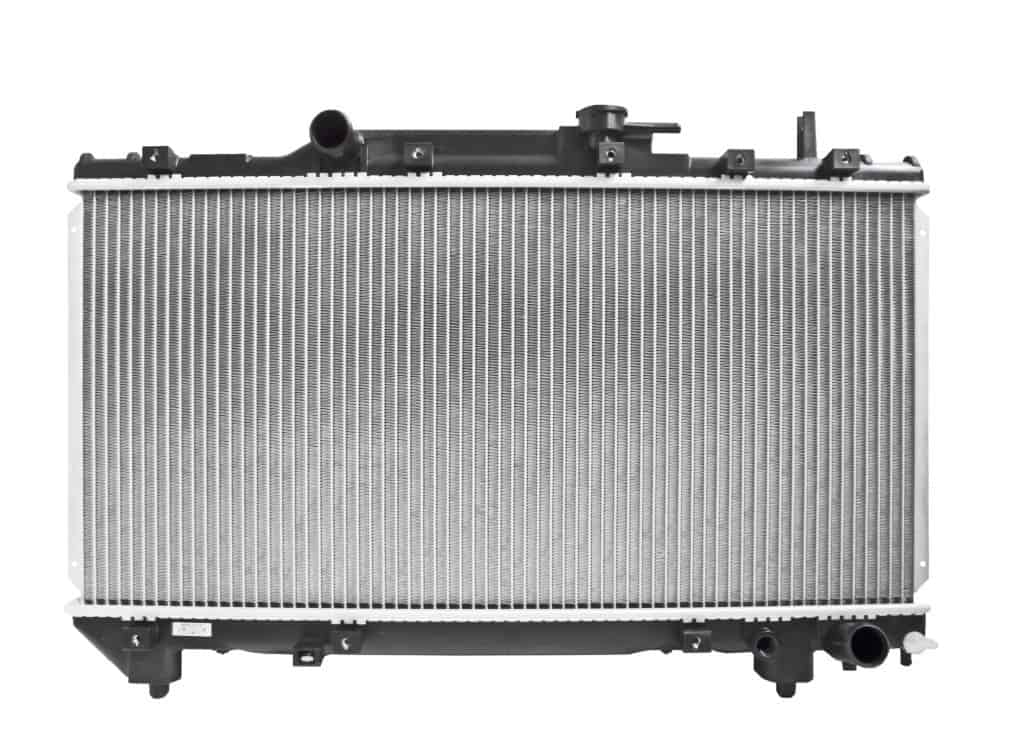
5. Bent or damaged radiator fins
Bent or warped fins reduce airflow and cooling performance.
Causes
Small stones, gravel, or even cleaning mishaps can damage the fins.
What to do
Use duckbill pliers to straighten minor bends gently. For severe damage, replacement is usually the best option.
6. Passenger area heater problems
If your car’s heater isn’t warming up properly, it could be due to a clogged radiator.
Causes
A blocked or leaking heater core prevents hot coolant from reaching the heating system, resulting in inadequate heating.
What to do
Check the thermostat first. If that’s working fine, have the radiator inspected.
7. Collapsed radiator hose
If your car overheats at high speed or high revs, you could have a collapsed radiator hose.
Causes
A faulty radiator cap that fails to release vacuum pressure, causing the hose to collapse.
What to do
Try cleaning or replacing the radiator cap. If overheating persists, have the coolant system checedby a mechanic.
How long do car radiators normally last?
Most car radiators last between 8 and 10 years, depending on how well they’re maintained and the type of coolant you use. Regular servicing, flushing the coolant every couple of years, and using the correct fluid for your vehicle can help prolong its lifespan. Signs of rust, leaks, or overheating are early warnings that your radiator may be nearing the end of its life. If you drive in harsh climates or drive regularly on salted winter roads, you might find your radiator has a shorter lifespan due to corrosion.
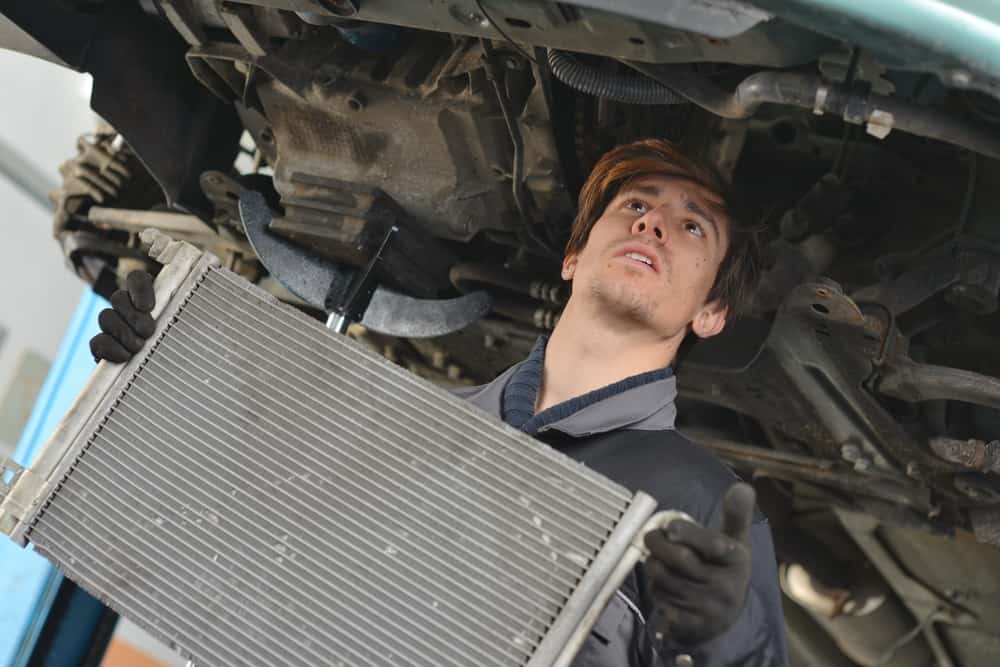
Replacing your car’s radiator
If you discover that your radiator damage is beyond repair, it’s possible to replace it yourself with some mechanical know-how and patience.
First signs of trouble
One of the first signs your radiator might be failing is a sweet smell while driving. This comes from evaporating coolant and usually means there’s a crack or leak in the radiator body. Unfortunately, radiators can’t usually be repaired — they’ll need to be replaced if damaged.
Step 1: Check the hoses and clips
Before replacing the radiator:
- Inspect all hose pipes for cracks, fatigue, or leaks
- Look for corroded or loose clips.
- Replace any faulty hoses or clips — these are cheap and easy fixes.
If the radiator itself is the problem, take a quick sketch or photo of the hose and clip positions to make reassembly easier later.
If your car has an automatic transmission, be prepared to collect excess transmission fluid in a bucket when removing the cooler pipes.
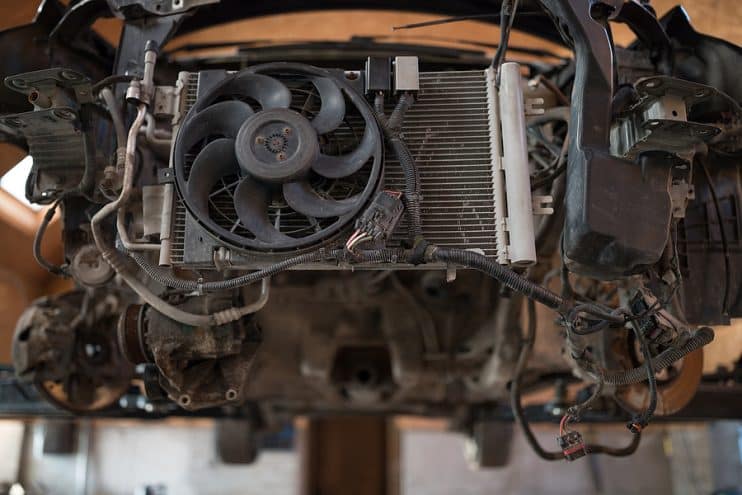
Step 2: Remove the fan and battery connections
- Check your owner’s manual to see whether the fan is bolted or removable.
- Remove the fan (and splash shield, if fitted).
- Disconnect the battery before draining the coolant — this prevents short circuits or damage to electrical parts.
Step 3: Drain the radiator
- Locate the drain plug, usually found at the bottom of the radiator.
- Place a bucket beneath it to catch the coolant.
- Carefully open the plug and let the coolant drain completely.
- If the flow slows or stops, gently clear the hole with a piece of wire or loosen the tap slightly.
Step 4: Remove the old radiator
- Detach all hoses and seal them temporarily with plastic bags and rubber bands to keep out dirt.
- Unscrew all visible bolts securing the radiator.
- Gently slide the unit out — check for any hidden bolts at the base.
- Consult your owner’s manual if removal is tricky.
Step 5: Fit the new radiator
- Slide the replacement radiator into position and secure it with the bolts.
- Reconnect all hoses, ensuring they’re firmly clamped.
- Refill the system with the correct coolant mixture.
Step 6: Test for leaks
- Start the engine and let it run for a few minutes.
- Watch the hoses and clips for signs of leaks once the engine has cooled.
- If everything stays dry, congratulations — your replacement is complete, and your cooling system should be working as good as new.

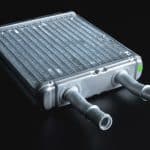
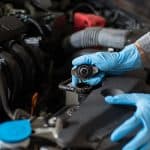
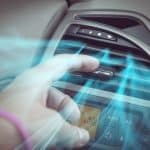
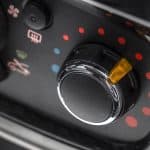

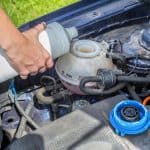
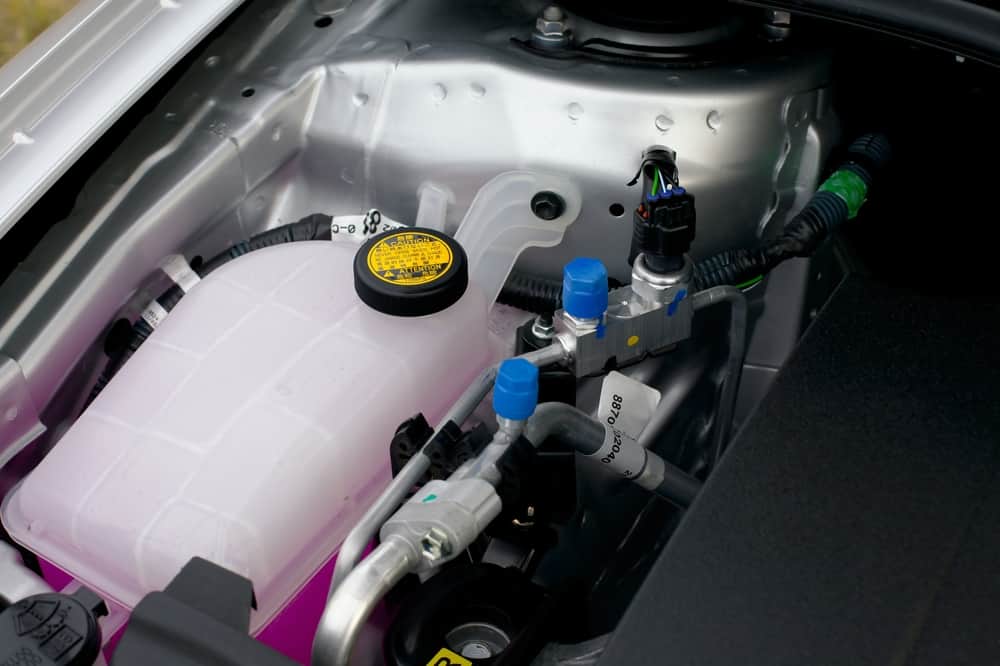
.png)